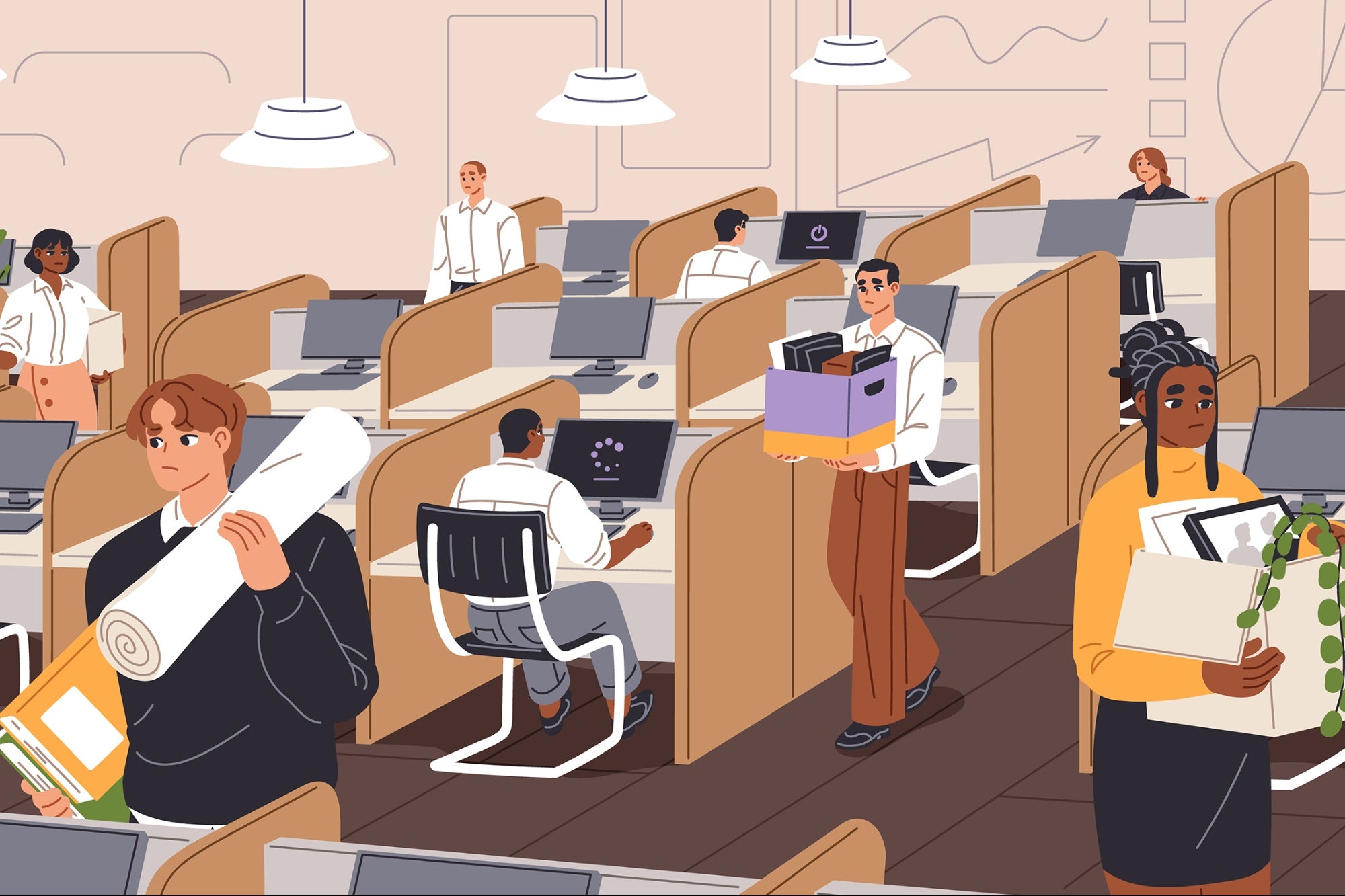This Unconventional Strategy Is the Secret to Unprecedented Business Growth Most organizations wait for disruption to force their hand. But the leaders who thrive aren't the ones who react best — they're the ones who create change before the market does it for them.
By Stephanie Mains Edited by Kara McIntyre
Key Takeaways
- Intentional self-disruption can lead to innovation, resilience and significant business growth, challenging traditional crisis management strategies.
- Strategic foresight allows organizations to anticipate and preempt market disruptions, positioning them at the forefront of industry changes.
- Transformational leadership that encourages proactive change can outpace competitors and reap the benefits of market opportunities.
Opinions expressed by BIZ Experiences contributors are their own.
The first time I considered dismantling a perfectly functional product line, I hesitated. It felt reckless, maybe even self-sabotaging. But looking back, it was one of the most strategic moves I ever made. By deliberately engineering a controlled crisis within my organization, I uncovered an unexpected wellspring of innovation, resilience and growth. Rather than waiting for external forces to shake our foundation, we chose to preempt disruption — and the results changed everything.
Throughout my career leading organizations through transformational change, I've learned one counterintuitive truth: waiting for a crisis to drive transformation is a losing strategy. I've lived through more major disruptions than most executives see in a lifetime — from 9/11 and SARS to the 2008 financial crash and the global pandemic. Each time, I watched organizations struggle to react, their carefully crafted crisis management plans falling short of the moment's unique demands.
What I observed time and again was that no matter how well-prepared an organization thought they were, these external shocks paralyzed people and systems. The recovery time was always longer than necessary, and the costs — both financial and human — were inevitably higher than they needed to be. We'd look back after each crisis and say, "If we had just made those changes sooner, we would have been better positioned." The hard truth is that most organizations know what changes they need to make. They just lack the urgency to make them until external forces leave them no choice.
This pattern led me to a radical conclusion: what if, instead of waiting for disruption to happen to us, we created it ourselves? What if we looked at our business model every day and asked, "How could this be destroyed by competitors, market shifts or innovation?" It's a scary question, but far less scary than facing those threats unprepared. When you're running a mature business, it's dangerously easy to get comfortable — to become the big fish that stops evolving because you think your position is secure.
Strategic foresight: Identifying where to strike
Opportunities to self-disrupt often hide in plain sight. They might be legacy products that have grown stale, processes that no longer scale effectively, or supply chains that lack flexibility. Strategic foresight means looking beyond immediate KPIs and asking tough questions about where the business might fracture if external pressures intensify.
- Are there product lines that consistently perform but show no real growth potential?
- Are we too dependent on a single vendor, region or technology stack?
- Have we locked ourselves into legacy models that hinder agility?
By mapping out these weak spots, leaders can anticipate where external disruption might strike and then move first — shattering old assumptions before competitors or market conditions do it for them. According to McKinsey, organizations that identify potential market inflection points ahead of the curve tend to outperform industry peers. Foresight isn't just a forecasting exercise — it's a strategic guardrail.
Related: How to Spot Trends and Anticipate Market Shifts Before Your Competition
Building resilience through controlled disruption
The question I hear most often is: "How do you create intentional disruption without destabilizing the entire organization?" The key lies in understanding that your people are more resilient than they realize. Teams that have navigated decades of industry shifts have already proven their ability to adapt — even if they don't recognize it.
The secret is combining this existing resilience with fresh perspectives. You need people who respect the legacy of what's been built but aren't bound by it. These change agents bring new tools and approaches while acknowledging the wisdom embedded in your current operations. When you blend these perspectives effectively, transformation feels less like a threat and more like an opportunity.
When we initiated a controlled crisis by moving engineering talent away from a legacy product and toward an emerging platform, the discomfort was palpable. Teams accustomed to legacy workflows scrambled, improvised and ultimately found fresh approaches. Some of our best product innovations emerged not during peaceful times, but during these carefully orchestrated "quakes."
Related: 5 Urgent Moves to Make to Shield Your Business from the Next Big Crisis
From theory to practice: Leading through transformation
When I took over a century-old industrial division, I inherited an organization that wanted to win and return to relevance. The business was mired in complexity — multiple product lines, various distribution channels and a spectrum spanning from complex engineered solutions to standard retail products. Multiple leadership teams had tried to address these issues, each struggling with the division's labyrinthine structure.
A failed systems implementation brought the situation to a head. Despite this, the organization remained trapped in old patterns, somehow expecting different results.
In my first leadership meeting, I faced a room full of tired, but deeply committed executives reviewing yet another challenging quarterly forecast. I stopped the presentation mid-slide. "We're not going to talk about this quarter's outlook," I said. "Instead, let's talk about what we truly want to become." An HR leader's candid response — "We just want to be relevant again" — became our rallying cry.
We used that moment to spark a complete transformation — restructuring our go-to-market strategy, realigning our product portfolio and rebuilding customer relationships from the ground up. Within 18 months, we had doubled profits. More importantly, we proved that transformation becomes inevitable when you empower people to make the changes they already know are needed and hold them accountable for results.
Related: Planning to Undergo a Business Transformation? Here Are 5 Tips to Help You Get Started
The final thought: Will you lead or follow?
Here's the stark reality: Industry titans rarely fall because their products fail overnight. They fall because they waited too long to evolve. By the time they react, the market has already chosen a new winner. The choice is stark: either shape the crisis yourself or have it shaped for you.
During Covid-19, I observed delivery trucks passing by my window while my husband described the struggles of logistics companies facing bankruptcy. While many saw chaos, I recognized an opportunity: the chance to transform a traditional printing company's logistics division into a cutting-edge ecommerce solution. The pandemic had accelerated the adoption of online shopping by years — making it the perfect moment to reimagine an industry built for the future.
The same opportunity exists for you. Step back and think about your business model. Map out all the ways it could be destroyed — by competitors, technology or changing customer expectations. Yes, it's terrifying. But it's also the first step to turning vulnerabilities into opportunities. Reflecting on my decision to dismantle a functional product line, I see parallels to those who thrived by making bold moves early. While many organizations delayed action, the real advantage lay in embracing disruption proactively rather than reacting passively.
The leaders who thrive aren't the ones best at responding to change — they're the ones who create it. Will you wait for the next crisis to force your hand, or will you lead the charge?











